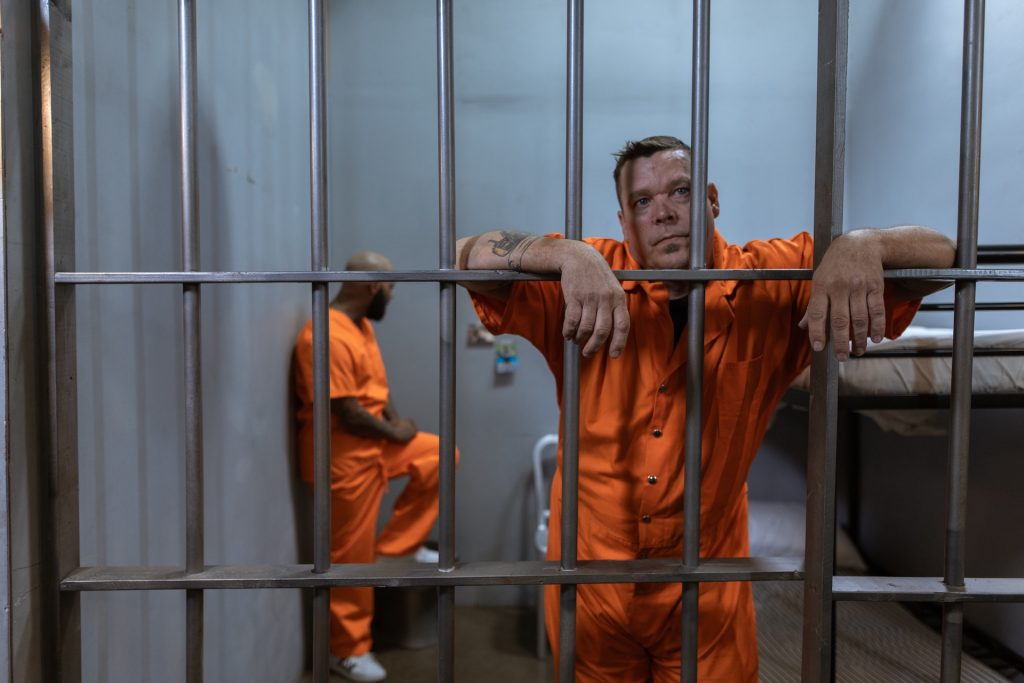It’s no secret that the United States has a problem with incarceration. According to the National Institute of Justice, as of 2015, there were more than 2.3 million people in U.S. prisons and jails—the highest incarceration rate in the world. The cost to taxpayers is also high: In 2010, it was estimated that the U.S. spent $80 billion on corrections alone.
While there are many factors contributing to these numbers, one significant contributor is the number of people who return to prison after being released. A study by the Bureau of Justice Statistics found that “More than three-quarters (77 percent) of prisoners released in 30 states were arrested for a new crime within five years, and almost half (47 percent) were arrested within the first year.”
This is a problem that needs to be addressed, and fortunately, there are steps we can take to reduce the number of people who return to prison after being released. One approach is rehabilitation: Programs that help prisoners transition back into society and provide support for them as they reintegrate into their communities. Evidence suggests that rehabilitation can be effective in reducing recidivism rates; a study by the RAND Corporation, for example, found that “participants in correctional education programs were 43 percent less likely to return to prison within three years than those who did not participate in such programs.”
Another approach is alternatives to incarceration: Programs that provide non-punitive, community-based interventions instead of jail or prison time. These programs can be effective in reducing recidivism rates as well; a study by the Vera Institute of Justice, for example, found that “participants in diversion programs were 29 percent less likely to return to prison within three years than those who did not participate in such programs.”
Both rehabilitation and alternatives to incarceration are important tools that can help reduce the number of people who return to prison after being released. We must invest in these programs and provide the necessary resources so that they can be effective in reducing recidivism rates.
Table of Contents
The effects of incarceration

When someone is incarcerated, it has a ripple effect on not just the individual but also their family and community. The person who is incarcerated often experiences isolation and a loss of freedom. They may also face difficult conditions, such as violence and abuse, in prison. Family members may also experience stress and financial hardship as a result of the incarceration. And the community may see an increase in crime as a result of the incarceration.
All of these effects are significant and need to be taken into account when discussing incarceration. We need to find solutions that address not just the individual but also their family and community.
Solutions
There are many solutions that we can implement to address the problems with incarceration. Some of these solutions include:
- Investing in rehabilitation programs
- Investing in alternatives to incarceration
- Providing support for families of those who are incarcerated
- Improving conditions in prisons
- Reducing the number of people who are incarcerated
- Providing support for those who are released from prison
These are just a few of the solutions that we can implement. We need to continue to explore and find solutions that work best for our country.
Solutions to the problem of felon re-entry
There are many solutions to the problem of felon re-entry, but the most important step is to provide rehabilitation and alternatives to incarceration. This will help reduce crime and save taxpayers money.
Rehabilitation programs can help felons get back on their feet, while alternatives to incarceration, such as probation or community service, can keep them out of prison. These solutions are cost-effective and far more humane than locking people up for minor offenses.
We need to invest in rehabilitation and alternatives to incarceration if we want to create a safe and healthy society. These solutions can help felons rebuild their lives, and they also benefit our economy and taxpayers. We have a moral obligation to provide rehabilitation and alternatives to incarceration, and we must act now to make these programs available to all who need them.
How rehabilitation and alternatives to incarceration can help reduce recidivism rates



Rehabilitation and alternatives to incarceration can play a crucial role in helping felons re-enter society. By providing these programs, we can reduce recidivism rates and make our communities safer.
Rehabilitation programs offer offenders the chance to get help for addiction or mental health issues. These programs can also provide job training and other necessary skills to help offenders find work.
Alternatives to incarceration, such as probation or community service, allow offenders to stay out of prison while still being held accountable. This is a much more cost-effective solution than incarceration, and it also helps keep families together.
If we want to reduce crime and make our communities safer, we need to invest in rehabilitation and alternatives to incarceration. These programs can help felons rebuild their lives, and they also benefit our economy and taxpayers. We have a moral obligation to provide rehabilitation and alternatives to incarceration, and we must act now to make these programs available to all who need them.
Why do we need to invest in these programs
There are many reasons why we need to invest in rehabilitation and alternatives to incarceration. These programs can help felons re-enter society, reduce recidivism rates, and make our communities safer.
Rehabilitation programs offer offenders the chance to get help for addiction or mental health issues. These programs can also provide job training and other necessary skills to help offenders find work. This is crucial because many felons have a hard time finding work after they’ve been released from prison.
Alternatives to incarceration, such as probation or community service, allow offenders to stay out of prison while still being held accountable. This is a much more cost-effective solution than incarceration, and it also helps keep families together.
Closing thoughts
We need to invest in rehabilitation and alternatives to incarceration if we want to create a safe and healthy society. These solutions can help felons rebuild their lives, reduce recidivism rates, and make our communities safer. Rehabilitation programs offer offenders the chance to get help for addiction or mental health issues; these programs also provide job training skills that felons need when they are released from prison. Alternatives such as probation or community service allow offenders to stay out of prison while still being held accountable- this is much more cost-effective than incarceration with many benefits including keeping families together. If you care about living an enjoyable life free of crime then it’s time you invested in rehabilitation and alternatives to incarceration!
































